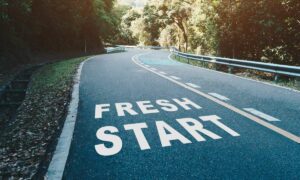We live in a universe permeated by unseen energies, influencing our lives in ways we might be barely aware of. Among the myriad methods humans have developed to harness and manipulate these energy flows is Reiki, a practice with its roots in ancient Japan. This introductory piece delves into the fascinating world of Reiki, explaining its principles and foundation, and providing a close-up look at its specific techniques for balancing and boosting energy. We round off this deep dive by looking at the potential benefits that Reiki could bring to physical, emotional, and mental health and give pointers on how beginners can embark on their own journey into the realm of Reiki for energy.
Understanding Reiki and Energy
Understanding Reiki: The Healing Touch
Reiki is a traditional Japanese form of holistic healing that works with the body’s energy to promote wellness and health. The term Reiki comes from the Japanese words ‘Rei’ which means ‘universal life’ and ‘Ki’ which is ‘energy’.
Reiki is based on the idea that a life force energy flows through all living beings. When an individual’s energy becomes disrupted, stagnant, imbalanced, or depleted, physical, emotional, and mental health issues can occur. Reiki is designed to support the body’s natural healing processes by improving the flow and balance of this energy.
Originating in Japan in the late 19th century, Reiki was developed by Mikao Usui who implemented a set of principles known as the ‘Five Precepts’. These principles provide spiritual guidance and emphasize the importance of peace and contentment in daily life. They include positivity, gratitude, integrity, devotion, and kindness towards all living beings. Reiki healers are expected to adhere to these guiding principles.
The Concept of Energy in Reiki
In the context of Reiki, energy refers to the vital life force that flows through all living things. This energy, often referred to as ‘ki’, ‘chi’, ‘prana’, or ‘life force’ in various cultures, is the substance that sustains life by keeping organisms alive and functioning.
Reiki practitioners believe that if life’s energy is high and free-flowing, a body can maintain a healthy physical condition. However, if it’s low or blocked, it could result in stress, illness, or other physical or emotional problems.
Manipulation of this energy forms the basis of Reiki healing. Practitioners use specific hand placement techniques around the body (sometimes without direct contact) to redistribute this energy, clear blockages, and restore balance. The intention is to boost the energy levels of a person, thereby enhancing the body’s natural healing capabilities.
Understanding Reiki for Energy Healing
Reiki, an energy healing approach, offers numerous potential benefits. It promotes relaxation and stress relief, often resulting in immediate improvements during and after treatment. Reiki works by restoring the balance of energy within the body, which can alleviate pain and accelerate the healing process from injuries or illnesses, enhance sleep quality, and improve emotional stability.
What makes Reiki unique is its ability to not only reduce physical and emotional discomfort but also to enhance spiritual wellness. This promotes self-discovery and personal development. Many individuals integrate Reiki into their spiritual practice or utilize it as a stepping stone toward personal enlightenment.
However, it’s crucial to recognize that while Reiki can be a significant medium for promoting health and well-being, it is not a replacement for standard medical treatment. It is frequently used in conjunction with traditional medical procedures or therapies to enhance health and healing since Reiki treatments pose no known adverse effects or contraindications.

Practices of Reiki for Energy
The Techniques of Reiki for Energy Enhancements
Reiki originates from Japan and operates on the concept that therapeutic energy can be channeled into a patient through touch, stimulating the body’s natural healing process and restoring physical and emotional well-being. There are several distinct techniques within Reiki focused on enhancing and balancing energy, which include hands-on healing, distant healing, and self-healing.
Hands-on Healing
The Hands-on Healing practice is the traditional and widely-known method of Reiki. In this approach, the practitioner uses a series of hand positions to focus on specific energy centers of the body, called chakras. The practitioner typically places their hands lightly on or over the body part that requires healing. The energy flows through the practitioner’s hands into the patient’s body, aiming to restore balance and promote healing. This technique is commonly used to relieve stress, manage pain, or address specific physical or emotional issues.
Distant Healing
Distant healing, also known as absentee healing, allows Reiki energy to cross any distance. This method breaks through the barriers of time and space, enabling the practitioner to send healing energies to an individual or situation in a different location. The practitioner visualizes the recipient and uses specific symbols and mantras to focus the energy transfer. Although it sounds complex, Reiki practitioners believe that energy, like light, isn’t bound by physical limitations.
Self-healing
The Self-healing practice in Reiki is a vital component, as it underlines the philosophy that healing starts from within. Practitioners utilize self-healing techniques to promote their own physical, emotional, and mental wellbeing, ensuring they are in the right condition to heal others. By placing their hands on various parts of their bodies, practitioners are able to channel healing energy to those places that need balance or relief.
Reiki Sessions: An Approach to Energy Boosting and Balancing
Reiki is a therapeutic practice carried out in a tranquil environment to optimize the healing process. It begins with the practitioner achieving a calm mental state and then connecting with the healing energy, typically through meditation. The recipient of the therapy would usually be reclining and fully clothed. By lightly placing their hands on designated spots across the head, limbs and torso, the practitioner allows the healing energy to channel. Long-distance energy healing involves visualizing the recipient and directing energy transfer. The duration of these sessions can range from 15 to 90 minutes, depending on the needs of the individual receiving the treatment.
Benefits and Effectiveness of Reiki
Delving Deeper Into Reiki for Energy Enrichment
Born in the late 19th century in Japan, Reiki is a kind of alternative healing methodology. The term ‘Reiki’ stems from two Japanese notions: ‘rei’, denoting ‘universal’, and ‘ki’, denoting ‘life energy’. Reiki revolves around the idea of tapping into this global life energy to bring about holistic health and wellness. Practitioners of Reiki implement a technique referred to as palm healing or hands-on healing to direct energy into the patient’s body, promoting emotional or physical healing.
Potential Physical Health Benefits
Reiki has been used to complement traditional treatments for a variety of physical health conditions. Its potential physical health benefits include reducing pain and symptoms of fatigue, as well as improving sleep quality. A research published in The Journal of Alternative and Complementary Medicine reported that patients experienced a significant reduction in pain following a Reiki treatment. Additionally, several studies have found promising results when it comes to the application of Reiki in promoting post-surgery recovery and alleviating symptoms of chronic conditions like fibromyalgia and arthritis.
Emotional and Mental Health Benefits
Aside from physical health, Reiki has also shown promising potential in improving mental and emotional well-being. Individuals who have undergone Reiki sessions frequently report feeling more relaxed and calm, attributes significant in relieving stress and anxiety. According to a study published in Depression and Anxiety: The official journal of the Anxiety and Depression Association of America, Reiki has been found effective in improving symptoms of depression and enhancing the overall quality of life.
Role in Energy Balance
Reiki is often mentioned in discussions about energy and balance and is believed to help align and stimulate the body’s natural energy centers, or chakras. Practitioners often claim that Reiki can remove energy blockages, allowing energy to flow more freely throughout the body, ultimately enhancing physical and emotional health. While anecdotal evidence supports these claims, concrete scientific evidence is currently limited and more research is needed.
Critics and Skepticism
It’s important to note that while many report experiencing benefits from Reiki, the practice is not without its skeptics. Some critics argue that the benefits people experience may be due to placebo effect rather than an actual change in energy in the body. The scientific community encourages further exploratory trials performed with rigorous methodological standards to better understand its effectiveness.
Understanding Reiki as a Health Support
Reiki is rapidly gaining recognition and acceptance in medical communities as a beneficial complementary approach to traditional healthcare. Though it is not intended as a standalone treatment for medical conditions, many people find its application essential in boosting overall health. Reiki is appreciated as a significant component in the management of a wide range of health issues due to its holistic perspective on mind-body wellness.
Getting Started with Reiki for Energy
How to Locate a Reiki Professional
Kickstarting your journey with Reiki involves initially finding a licensed Reiki practitioner or master. Resources such as the International Association of Reiki Professionals (IARP) and The Reiki Alliance host international listings of certified practitioners and educators. When choosing a practitioner, it’s crucial to consider their training level, experience, and their Reiki specialization (Usui, Karuna, Holy Fire – each offering unique qualities). Since Reiki involves personal energy transfer, selecting a practitioner you feel at ease with is equally important.
What to Expect in a Reiki Session
Modern Reiki treatments typically start with an initial consultation where you discuss your physical, emotional or spiritual issues. Practitioners use a series of hands-on or hands-off techniques, often following the Chakra energy system of the body. The practitioner will move their hands progressively through certain positions on the body, channeling healing energies to these areas. Each position is held for a period of time, generally three to ten minutes.
Reiki is typically practised in a calm, therapeutic environment to encourage relaxation. It’s common to experience warmth, coolness, pulsations, or other sensations during a session. Many people report feeling a deep sense of tranquility and rejuvenation following a Reiki treatment.
Starting Your Reiki Journey
Committing to a regular Reiki practice can offer profound benefits for your energy levels and overall wellbeing. It’s normal to start with a focus on physical healing and as you deepen your interest, be drawn towards emotional and spiritual wellness. Many people experience more balanced energy levels and increased self-awareness over time.
Self-practice is also an integral part of the Reiki journey. The Reiki principles or Gokai are guidelines for living a fulfilling life, and are traditionally recited daily by Reiki students. They include: Just for today, I will let go of anger; Just for today, I will let go of worry; Today, I will count my many blessings; Today, I will do my work honestly; Today, I will be kind to every living creature.
Here are some additional tips for getting started with Reiki: try to enter each session with an open mind and no expectations; practice mindful meditation and deep breathing as part of your Reiki journey; maintain a healthy lifestyle as the benefits of Reiki are more readily absorbed by a well-kept and well-nourished body.
Preparing for a Reiki Session
Successful Reiki treatments begin with preparation. Firstly, discuss any health concerns or personal goals with your practitioner in the initial consultation. It’s also helpful to wear comfortable, loose-fitting clothing and remove any jewelry before the session.
In the 24 hours leading up to your session, try to relax and stay hydrated. Avoid consuming alcohol, caffeine, or large meals, as these can disrupt your energy levels. If you’re feeling anxious, practice mindful breathing techniques or spend some time in a calming environment.
Lastly, always remember that each person’s Reiki experience is unique. It can take multiple sessions before you start noticing significant changes in your energy levels and overall well-being. Patience and consistency are key components in reaping the full benefits of this ancient and powerful healing technique.
As our exploration comes to an end, it’s clear that Reiki for energy is a holistic wellness journey that goes beyond just clicking an ‘off’ switch to ailments. It’s about inner harmony cultivated by mindful practices and a transformation that extends from the individual to the universe. To start this journey, one needs the guidance of a qualified Reiki practitioner, a mind open to learning and experiencing, and an environment conducive for practice. Navigate through the streams of energy around and within you to attain an enhanced level of health, and by doing so, embrace the fullness of life that Reiki offers.



